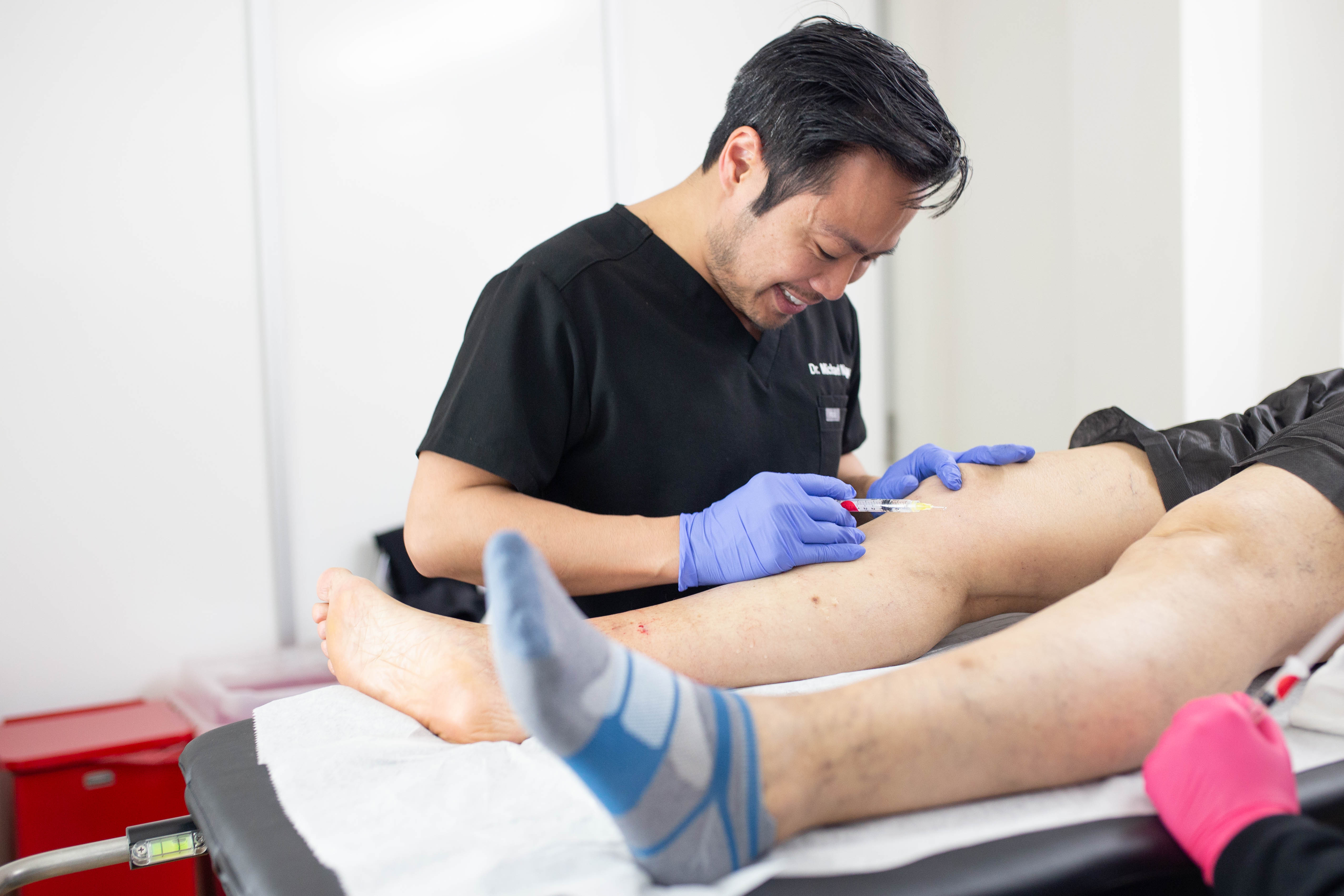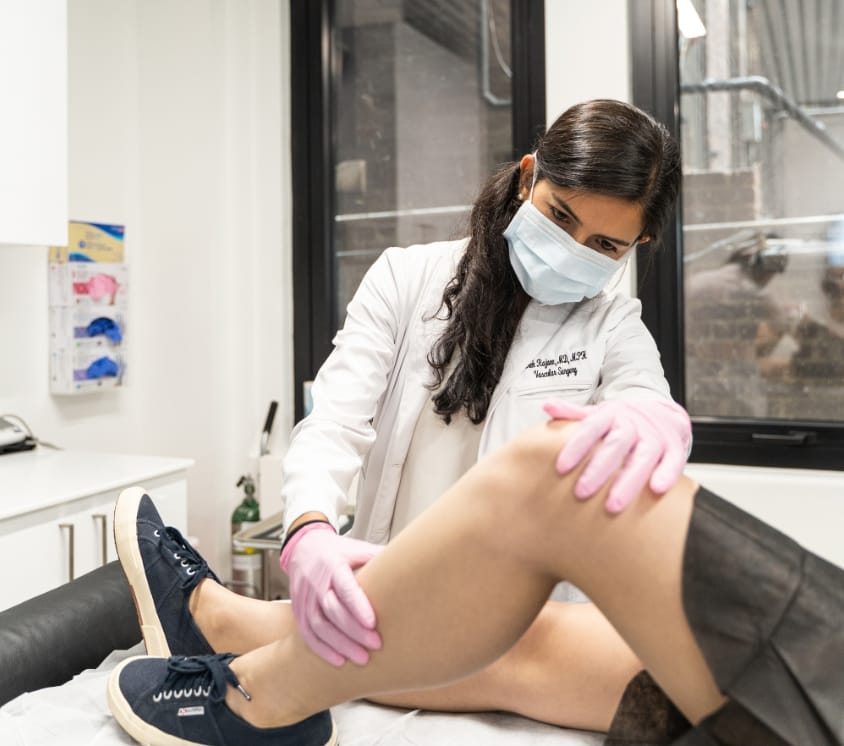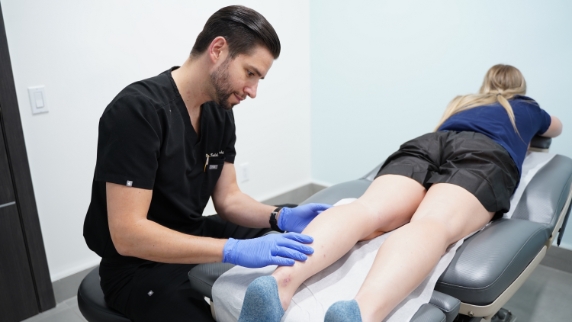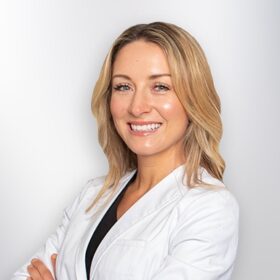Sclerotherapy for Spider and Varicose Vein Removal
Varicose veins and spider veins are uncomfortable and unsightly. Fortunately, you don’t have to live with this condition. Advanced treatment methods reduce or eliminate protruding veins quickly, and procedures can be performed at your vein treatment clinic.
Sclerotherapy treatment is one of the most popular options for managing vein disease. This procedure is fast, minimally invasive, and highly effective. Your vein doctor uses a medical injection to permanently close unhealthy veins, and blood is automatically rerouted through healthier vessels. The tissue from the closed veins is reabsorbed by your body, erasing the prominent veins.
Speak with your vein doctor in New York or you vein specialist in New Jersey about whether sclerotherapy treatment is right for you.

What Causes Varicose Veins and Spider Veins?
Your heart pumps blood through your arteries and veins, so that it can carry oxygen to all of the organs and tissues in your body. Arteries carry oxygenated blood away from the heart, and veins bring deoxygenated blood back to the heart so it can pick up a fresh supply. Veins have a more difficult job, because they are working against gravity to move blood from your lower half to the heart. Fortunately, they have a secret weapon to help the process along.
A series of tiny one-way valves are located at strategic points throughout the vessels. They open to let blood pass, and then they close to prevent any backflow. When these valves become diseased or damaged, blood leaks through. It pools in the lower part of your body, putting pressure on other valves and the vessel walls.
This pressure causes damage to your veins, and they often begin to swell. When they take on a thick, twisted, rope-like appearance and protrude against the surface of the skin, they are referred to as varicose veins. When they look like a net or web of blue, purple, or red just below the surface of the skin, they are referred to as spider veins.
One of the most common causes of varicose veins and spider veins is a condition called Chronic Venous Insufficiency (CVI). Though it affects a large percentage of Americans, this condition often goes undiagnosed. Physicians who do not specialize in venous disorders lack the equipment, experience, and expertise to identify the signs of vein disease. Unfortunately, this means that treatment plans simply focus on the symptoms – varicose veins and spider veins – instead of the underlying cause.
When you choose either a vein doctor in New York or a vein dcotor in New Jersey, you can be sure that you will get the specialized care necessary for an accurate diagnosis. You will also receive a comprehensive treatment plan that addresses the cause of your varicose veins and spider veins, as well as the unhealthy veins themselves.
How does Sclerotherapy Treatment Work?
The beauty of sclerotherapy treatment is that you don’t have to see a vascular surgeon or check into a hospital for the procedure. It is minimally invasive and doesn’t require anesthesia, so your vein specialist can perform the treatment at the Vein Treatment Center of your preference. Before your appointment, your physician may ask you to avoid anti-inflammatory drugs, certain supplements, and specific prescription medication. Otherwise, very little preparation is necessary.
Your vein doctor will apply a local anesthetic to the injection site, so that you don’t experience any discomfort. A slight incision is made in your skin so that your physician can access the veins being treated, then medication is delivered to the unhealthy vein or veins using a fine needle. Usually, the incisions are so small, they don’t even require stitches.
Sclerotherapy treatment takes between 15 and 30 minutes to complete, depending on the number of veins being treated. Recovery time is minimal, and once the treated veins are fully closed, the swelling associated with varicose veins will start to go down. The appearance of varicose veins and spider veins gets fainter, and eventually the tissue is fully reabsorbed by your body. The length of time before you see results depends on the size of the vein. Tissue from a larger vein takes a bit longer to be reabsorbed. However, you should start to notice changes within a few days.

What are the Risks and Side Effects of Sclerotherapy Treatment?
There are some side effects associated with sclerotherapy treatment. One of the most common is a sensation of cramping around the injected veins during the procedure. This discomfort is usually described as mild, and it lasts for just a minute or two.
After your treatment, you may experience some itching around the treated areas. Some patients notice raised red welts and/or bruising near the injection site. These side effects usually go away within a few days.
Sclerotherapy treatment has a long history, and it has been proven both safe and effective. Of course, any medical procedure carries some risk. These are a few to keep in mind:
- You may experience an allergic reaction to the medical injection. Such reactions are rarely serious, and they tend to occur while you are still in your doctor’s office. You can be sure that your physician is fully prepared to manage this issue if it occurs.
- Brown spots or lines might appear where the treated vein was located. These generally disappear within three to six months, but for some patients, the spots or lines are permanent.
- In some cases, a network of small new veins develops in the area where the treated vein was located. Usually, there is no need to treat this issue, as the new veins vanish on their own within three to twelve months.
Certain side effects require immediate action. You should contact your vein doctor and seek emergency care if you experience any of the following symptoms:
- Inflammation near the groin
- Sudden swelling in your leg
- Ulcers appearing at the site of the injection
These are signs of a more serious reaction to the treatment, and you must address them right away.
How Long is Recovery and What After-Care is Required?
Once your treatment is complete, you are free to resume nearly all of your normal activities right away. However, your vein doctor will ask you to stay away from these until you have had a follow-up visit:
- Strenuous exercise
- Hot baths
- Whirlpools, hot tubs, and saunas
- Hot compresses
- Direct sunlight
You can and should do plenty of walking, and you can still shower – just be sure that the water temperature is on the cooler side. Your doctor will also recommend that you wear compression stockings to encourage healthy circulation in your legs during the healing process.
If you experience any discomfort, your vein doctor will suggest an appropriate over-the-counter pain reliever. Usually, it is best to avoid anti-inflammatory drugs in favor of acetaminophen (Tylenol). Speak to your physician before taking any medication until you have fully recovered.
The Board-Certified vein doctors at the Vein Treatment Center have specialized education and experience in diagnosing and treating venous disorders. You can rely on their expertise to ensure you get the best possible treatment for your unique needs. Schedule an appointment online or call the Vein Treatment Clinic at 212-470-0899 to learn more about the treatment options that are available to you.
















